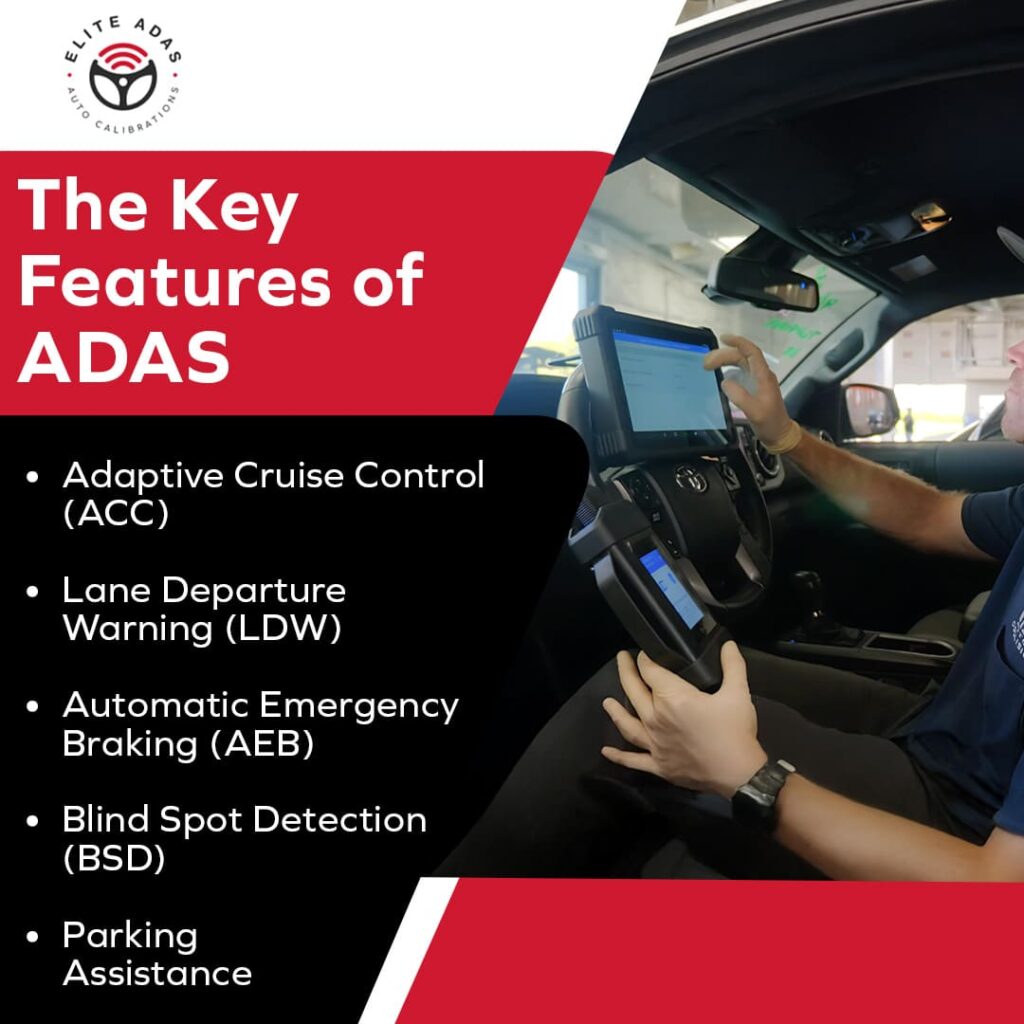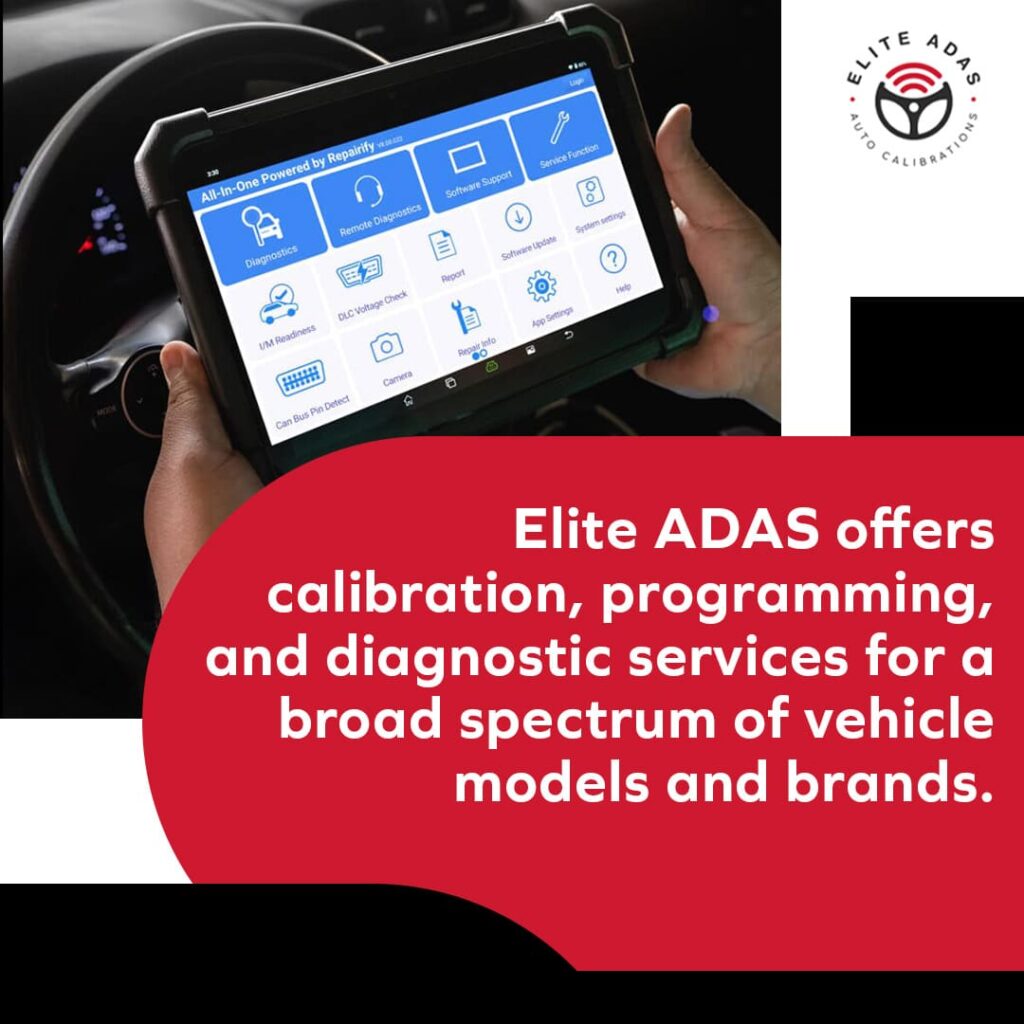In recent years, the automotive industry has transformed with the introduction of advanced driver assistance systems (ADAS). These systems use sensors, cameras, and radar to improve driving safety and convenience. By integrating various safety features, ADAS has changed how drivers interact with their vehicles, offering advanced technologies that reduce accidents and enhance the overall driving experience.
Technologies such as automatic emergency braking and lane-keeping assistance significantly reduce accidents by minimizing human error. Adaptive cruise control, blind-spot monitoring, and collision warning systems further improve safety and comfort. These features continuously monitor road and vehicle conditions, providing alerts or corrective actions when potential hazards are detected. ADAS technologies play a crucial role in enhancing road safety and preventing serious incidents.
ADAS systems help drivers maintain a safe following distance, alert them to lane departures, and apply brakes in emergencies. By working in real-time, these systems support safer driving and help prevent collisions, contributing to a safer driving environment for all road users.

Understanding the Importance of Calibration
ADAS technologies have made driving safer, but their complexity requires careful maintenance and calibration. Elite ADAS specializes in Advanced Driver Assistance Systems (ADAS) calibration, adjusting sensors, cameras, and radar systems to meet manufacturer standards. For modern vehicles with these technologies, accurate and timely calibration keeps them working properly.
Precise calibration is critical to Elite ADAS systems’ functionality. Proper alignment of sensors and cameras ensures reliable performance, as even small misalignments can reduce the effectiveness of these safety features. Misaligned systems may be particularly dangerous in truck-heavy traffic areas like Los Angeles, where semi-truck accidents can lead to significant economic disruption and safety risks, as seen in the recent overturned semi-truck incident on the southbound I5 Freeway in East Los Angeles.
This guide covers the basics of ADAS, how these systems work, why proper calibration matters, and the risks of neglecting maintenance. It also explores different driver assistance technologies, their functions, and how they contribute to a safer driving experience. Understanding these systems helps drivers make informed decisions when selecting a vehicle.
By the end, you will know how ADAS systems operate, why upkeep is essential, and what steps to take to keep them in good condition. Whether you own a vehicle, are new to driving, or are interested in modern automotive technology, this guide offers useful insights into ADAS and its role in road safety.
What Are Advanced Driver Assistance Systems (ADAS)?
Advanced Driver Assistance Systems (ADAS) use technology to improve vehicle safety and assist with driving. These systems rely on sensors, cameras, radar, and machine learning to help drivers stay aware of their surroundings. Common ADAS features include:
- Adaptive Cruise Control (ACC): Adjusts speed to maintain a safe distance from the vehicle ahead.
- Lane Departure Warning (LDW): Alerts drivers when the vehicle drifts out of its lane.
- Automatic Emergency Braking (AEB): Applies brakes automatically to reduce the risk of a collision.
- Blind Spot Detection (BSD): Warns drivers when another vehicle is in their blind spot.
- Parking Assistance: Detects obstacles around the vehicle and provides guidance for parking.
ADAS functions through strategically placed sensors and cameras that reduce crash risks, improve awareness, and enhance reaction times. Regular calibration and maintenance are necessary to keep these systems working correctly.
Understanding ADAS Technology
ADAS technology relies on multiple hardware and software components, each designed for specific driving functions. The key technologies supporting these systems include:
- Cameras: Mounted in different areas of the vehicle, cameras capture visual data for features like lane-keeping assistance and traffic sign recognition. They help detect objects and monitor the surroundings.
- Radar Sensors: Commonly used in adaptive cruise control and collision warning systems, radar sensors send radio waves and measure their return time to detect objects ahead.
- Ultrasonic Sensors: Found in parking assistance and collision avoidance systems, these sensors emit sound waves and calculate the reflection time to identify nearby obstacles.
- LiDAR (Light Detection and Ranging): LiDAR uses laser beams to create a detailed 3D map of the surroundings. It is especially useful for features that require precise object detection, such as autonomous driving.
Together, these components form a sensor network that continuously monitors the environment, allowing ADAS technology to adjust the vehicle’s behavior in real-time.
The ADAS Calibration Process
Calibration adjusts sensors, cameras, and radar systems according to manufacturer guidelines. Misaligned sensors can lead to incorrect readings and system failures, affecting vehicle safety.
ADAS calibration is a specialized process that requires technical expertise. It involves adjusting camera and sensor positions to keep all systems within the required limits.
- Diagnostic Scanning: Technicians check the car’s onboard diagnostic system for existing issues with cameras or sensors.
- Sensor Calibration: Radar, cameras, and other sensors are aligned to meet manufacturer specifications.
- Software Calibration: Software adjustments sync sensor data after hardware replacements.
- Road Testing: A test drive confirms that ADAS systems function correctly after calibration.
Elite ADAS provides accurate ADAS calibration services. Our technicians use advanced technology to fine-tune vehicle safety systems for reliable performance. We strictly follow OEM specifications and industry standards. With precise calibration, your vehicle’s ADAS components work as intended, enhancing safety on the road.
Why ADAS Calibration Matters
Elite ADAS specializes in Advanced Driver Assistance Systems (ADAS) calibration, helping drivers maintain vehicle safety features. ADAS relies on sensors, cameras, and radar to monitor surroundings and support features like adaptive cruise control, automatic emergency braking, and lane-keeping assist. These systems must function correctly to help reduce the risk of accidents. If any component is misaligned or damaged, it can cause malfunctions, leading to unsafe driving conditions.
For example, lane-keeping assist depends on sensors and cameras to detect lane markers. If they are out of alignment, the system may fail to recognize lane boundaries, increasing the risk of unintended lane departures. Adaptive cruise control adjusts speed based on surrounding traffic. If radar sensors are not calibrated properly, the system might react too slowly or too aggressively, causing sudden braking or tailgating.
Elite ADAS offers precise calibration services to help keep these systems working properly and reduce the chance of errors. Proper alignment of cameras, sensors, and radar ensures accurate detection of objects, lane positions, and other vehicles. A misaligned radar sensor may fail to identify obstacles correctly, affecting adaptive cruise control and collision avoidance features. Cameras that are not set correctly can impact forward-collision warnings and lane-keeping assist.
Regular ADAS calibration with Elite ADAS helps maintain vehicle safety features as intended, improving overall system performance and reliability. Contact Elite ADAS today for expert calibration services.
VehicleDriver Assistance System Repair for Vehicle Safety
ADAS technologies help improve driver assistance systems for vehicle safety, but like any car component, they can develop issues. These systems rely on sensors, cameras, radar, and other technology to support features like lane-keeping assist, adaptive cruise control, automatic emergency braking, and collision avoidance.
Over time, environmental factors, wear and tear, or minor misalignments can affect performance. Problems may include faulty cameras, damaged radar sensors, or communication errors between systems. Prompt repairs help maintain proper function and prevent safety risks on the road.

The Importance of Timely Repairs and Maintenance for Driver Assistance Systems
A malfunctioning camera can cause inaccurate lane departure warnings or prevent the forward collision warning system from working properly. Other issues, such as poor communication between components or interference from dirt and debris on sensors, can also affect system performance. When one part fails, key safety features may stop functioning, putting the driver at risk and reducing the vehicle’s ability to help prevent collisions.
Fixing driver assistance systems goes beyond replacing a single faulty part. It requires identifying and resolving issues across the entire system. Repairs may involve diagnostic tests to find the root cause, recalibrating sensors or cameras for proper alignment, or replacing worn or damaged components. Some problems may only require cleaning or minor adjustments, while others need more complex repairs. Regardless of the issue, quick action helps maintain both safety and performance.
Just like an engine or brakes need regular servicing, so do the sensors and cameras in driver assistance systems. Routine maintenance helps catch potential problems early, reducing the risk of failure when the system is needed most. Simple tasks like sensor recalibration or camera cleaning during regular service help keep these systems running smoothly, preventing costly repairs down the road.
Comparison of Driver Assistance Technologies
When it comes to choosing a vehicle with ADAS features, it’s important to understand the differences between various driver assistance technologies. Here’s a comparison of some common ADAS features:
- Adaptive Cruise Control (ACC) vs. Traditional Cruise Control: While conventional cruise control keeps a steady speed independent of the surrounding traffic, adaptive cruise control provides more sophisticated capability by changing the speed of the vehicle depending on traffic conditions.
- Lane Departure Warning vs. Lane Keeping Assist: Lane departure warning alerts the driver when the vehicle drifts out of its lane without signaling, whereas lane-keeping assist goes a step further by gently steering the vehicle back into its lane.
- Automatic Emergency Braking vs. Collision Avoidance System: While both systems are designed to prevent accidents, automatic emergency braking activates when the system detects an imminent collision and automatically applies the brakes. A collision avoidance system, on the other hand, may also steer the vehicle to avoid the obstacle.
Each vehicle manufacturer uses different approaches to these technologies, with varying levels of sophistication and capabilities. Understanding the differences can help drivers choose the vehicle that best suits their safety needs.
Benefits of Advanced Driver Assistance Systems
ADAS technologies offer numerous benefits to drivers, including:
- Enhanced Safety: Improvements in road safety are the primary benefit of ADAS. Automatic emergency braking and lane-keeping are two features that help prevent and decrease collisions.
- Reduced Driver Fatigue: Long road trips or heavy traffic can be tiring, but ADAS technologies such as adaptive cruise control can help reduce the strain on the driver by managing speed and steering.
- Increased Convenience: While collision warning systems can help prevent accidents in congested surroundings, parking sensors, and automatic parking assistance can make parking easier.
- Insurance Benefits: Since ADAS-equipped vehicles reduce the likelihood of accidents and injuries, several insurance companies grant discounts to drivers of them.
The Future of ADAS
The future of Advanced Driver Assistance Systems (ADAS) will largely depend on artificial intelligence (AI) and machine learning. By analyzing large amounts of data from multiple sensors in real time, AI allows vehicles to make faster and more precise decisions about braking, steering, acceleration, and other key functions. Fully autonomous vehicles will reshape the driving experience, improving both convenience and safety.
Passengers will have more freedom to focus on other activities during their trips, such as working, reading, or relaxing, as ADAS takes over driving tasks. Long-distance travel will become less exhausting, giving people more time for other priorities. Autonomous vehicles could also help reduce traffic congestion and lower stress by driving more smoothly and efficiently, minimizing unnecessary stops and delays.
As ADAS technology advances, vehicles will handle more driving tasks, from navigating city streets to merging onto highways and making split-second decisions in emergencies. Fully autonomous cars will no longer require manual control, allowing drivers to shift their attention elsewhere. Along with reducing human error—one of the leading causes of traffic accidents—these advancements will improve traffic flow as vehicles communicate with each other, adjusting speed and routes accordingly.
Companies like Elite ADAS play a key role in this progress. Their expertise in precise, fast, and reliable calibration services supports the performance and safety of autonomous driving technology.
Conclusion
Advanced Driver Assistance Systems (ADAS) improve safety and convenience, changing how people drive. Keeping these technologies working well requires understanding how they function, why calibration matters, and when repairs are needed. Regular maintenance and calibration help keep ADAS operating at a high level.
Elite ADAS in Rocklin provides expert calibration services and information on advanced vehicle safety features. For professional ADAS calibration or questions about your vehicle’s safety systems, call (916) 471-4606 or email [email protected]. Contact us today for reliable ADAS solutions.
